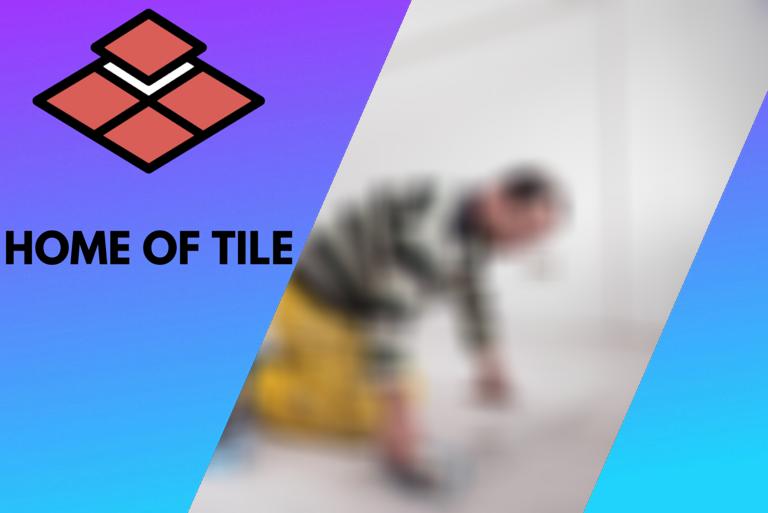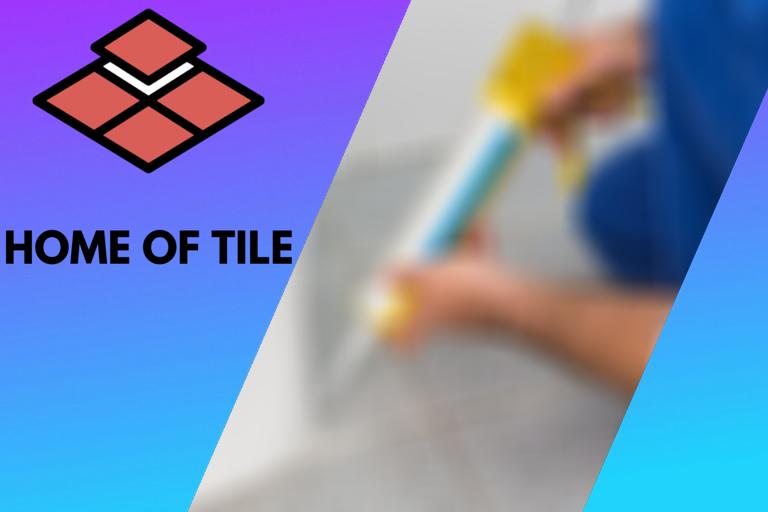How Long Does Tile Mortar Take To Dry, 25 expert tips
In the world of home renovation, time is of the essence. If you’re laying tiles, knowing how long the mortar takes to dry is crucial to ensuring a successful project outcome. But is there a one-size-fits-all answer?
How long does tile mortar take to dry:
Tile mortar drying time is crucial for successful tiling projects and depends on factors such as type of mortar, tile size and material, ambient conditions, and mortar thickness. Thinset mortar takes 24-48 hours to dry, while mastic dries faster, 2-4 hours for setting and 24 hours for complete curing. Large, dense tiles take longer, while smaller, less dense tiles dry quicker.
High humidity and low temperatures increase drying time, while optimal conditions are 65-70F with good ventilation. Thicker mortar layers require longer drying times. Proper drying ensures a strong bond between the tiles and substrate.

Discover the factors influencing mortar drying time, its vital role in tile installations, and best practices for optimal results. Unveil the intricacies of curing processes and industry recommendations to ensure a sturdy, long-lasting finish.
Contents
- 1 What is the Drying Time for Tile Mortar?
- 2 What is the appropriate drying time for mortar before proceeding with grouting?
- 3 What is the appropriate duration for the mortar to set before commencing the cleaning process?
- 4 Is it feasible to walk on tiled surfaces after a 6-hour duration?
- 5 What is the duration after applying grout before walking on tiled surfaces?
What is the Drying Time for Tile Mortar?
Tiling projects can be deceptively simple, making it crucial for any DIY enthusiast or professional to understand how long tile mortar takes to dry.
I will dive into the factors that can influence drying time, provide approximate drying times based on different variables, and I will share tips for ensuring your tile installation proceeds smoothly.
• Factors Influencing Tile Mortar Drying Time
– Type of Mortar
Various types of tile mortar are available, each with its own characteristics, and drying time is one of them. The most common types of tile mortar used are:
- Thinset Mortar: Thinset mortar is a blend of cement, fine sand, and water retention agents, making it an ideal choice for bonding tiles to surfaces. It typically takes around 24-48 hours to dry.
- Mastic: Mastic is an organic adhesive commonly used for lighter tiles such as ceramic or glass. It has a faster drying time than thinset, taking around 2-4 hours to set and 24 hours to cure completely.
– Tile Size and Material
The size and material of your tiles can also affect the drying time of your mortar. Large, dense tiles such as natural stone or porcelain can take longer to dry, as they can hold more moisture. Meanwhile, smaller and less dense tiles, like ceramic or glass, can dry quicker, given their lesser moisture capacity.
– Ambient Conditions
Temperature, humidity, and airflow can impact the drying time of tile mortar. In high-humidity or low-temperature environments, your mortar may take longer to dry. Conversely, low humidity and warm temperatures can accelerate the process.
For optimal results, it is recommended that you complete your tiling projects in well-ventilated spaces while maintaining a temperature of around 65-70F (18-21C).
– Thickness of Mortar Application
When applying your mortar, the thickness of the layer can greatly affect the drying time. A thicker layer will result in a longer drying period, while a thinner layer will yield a shorter drying time.
As a general rule of thumb, apply a 3/32-inch (2-3 mm) to 1/4-inch (6 mm) thick layer onto the substrate using a notched trowel.
• Drying Times for Common Tile Installation Scenarios
– Floor Tiling
For most floor tiling projects using thinset mortar, a drying time of at least 24 hours is recommended before grouting. This ensures that the mortar has adequately bonded the tiles to the substrate.
If you use large-format tiles or a mortar with a modified polymer, allow an additional 24 hours for a total drying time of up to 48 hours.
– Wall Tiling
When installing wall tiles, the drying time can be significantly reduced since the vertical orientation allows for better airflow and moisture evaporation. In most cases, it is safe to begin grouting within 12-24 hours after applying the mortar.
However, waiting at least 24 hours before proceeding with large or heavy tiles is still advisable.
– Shower and Wet Areas
When tiling areas are exposed to high moisture levels or water, like a shower or a bathroom floor where water may seep through, it is essential to allow additional time for the mortar to cure completely. 48-72 hours is typically recommended before applying any grout or sealant, ensuring a waterproof barrier.
• Tips for a Successful Tile Installation Project
– Use the Right Mortar
As mentioned earlier, selecting the appropriate mortar for your tiling project is essential. Thinset mortar is generally recommended for most applications due to its strong bond, moisture resistance, and compatibility with various tile materials.
– Ensure Adequate Surface Preparation
Before applying your tile mortar, clean the substrate thoroughly, removing any dust, debris, or grease. This will ensure a strong bond between the mortar and the substrate.
– Monitor Environmental Conditions
To ensure optimal drying conditions, avoid tiling in locations with excessive humidity, extreme temperatures, or poor ventilation. If necessary, use fans or heaters to maintain a favorable environment during the drying and curing.
– Follow Manufacturer Recommendations
Always consult the manufacturer’s instructions for the specific mortar product to ensure appropriate mixing ratios, application techniques, and drying times.
In conclusion, understanding the factors influencing tile mortar drying time is crucial for any successful tiling project. By considering the type of mortar, tile size and material, ambient conditions, and mortar thickness, you can ensure proper drying and a strong bond between your tiles and the substrate.
Follow expert tips and the manufacturer’s recommendations for a successful installation.
Type of Mortar | Drying Time |
|---|---|
Thin-set mortar | 24 to 48 hours |
Thick-bed mortar | 2 to 7 days |
Rapid-setting thin-set | 2 to 4 hours |
What is the appropriate drying time for mortar before proceeding with grouting?
When working on a tiling project, knowing the appropriate drying time for mortar before grouting is crucial. Failing to allow the mortar to dry adequately could result in various issues, such as weakening the bond between the tiles and the mortar, or causing the grout to crack, ultimately leading to a compromised and unsightly final product.
I will discuss the factors determining mortar drying times, the optimal drying periods, and tips to ensure a successful tile installation.
• Factors Affecting Mortar Drying Time
Several factors come into play when determining the drying time for mortar. Understanding these factors will help you decide when to apply grout during your tiling project.
– Type of Mortar
Different types of mortar have varying drying times. For instance, thin-set mortar, commonly used for tile installation, typically takes 24 to 48 hours to dry. On the other hand, thicker mortar beds may require between 48 to 72 hours of drying time.
– Tile Material
Some tile materials, such as natural stone, are more porous than others, meaning they can absorb some moisture from the mortar, accelerating the drying process. Conversely, moisture-resistant materials like porcelain and glass tiles can slow the drying process.
– Environmental Conditions
Environmental factors, such as temperature, humidity, and airflow, can significantly impact the drying time of mortar.
- Temperature: Higher temperatures speed up the drying process, while cooler temperatures slow it down. Ideally, the temperature should be between 50F and 100F (~10C to 38C) for optimal drying.
- Humidity: Lower humidity levels allow the mortar to dry more quickly, while higher humidity levels slow down the process. Aim for a relative humidity below 60% for ideal drying conditions.
- Airflow: Proper ventilation and airflow can improve drying times, as they help evaporate moisture from the mortar.
• Recommended Drying Times Before Grouting
Considering the factors above, the recommended drying time for mortar before grouting can vary depending on your project. However, following these general guidelines will provide a good starting point:
– Thin-set Mortar
Waiting 24 to 48 hours before grouting is generally recommended for standard thin-set mortar installations. Be sure to read the manufacturer’s guidelines on the mortar packaging, as some modified or rapid-setting thin-set mortars might have shorter drying times.
– Medium or Thick Mortar Beds
If you’re working with a medium or thick mortar bed, you’ll need to allow more time for drying. In these cases, it’s best to wait for at least 48 to 72 hours before grouting.
• Tips for Ensuring a Successful Tile Installation
To achieve a professional-looking result and avoid potential issues with your tile installation, follow these tips:
– Be Patient
While it may be tempting to speed up the process, rushing the mortar drying and grouting can lead to compromised results and even require redoing the entire project in some cases. Be patient and give the mortar ample time to dry before grouting to avoid these problems.
– Use a Moisture Meter
Consider using a moisture meter to ensure the mortar is dry enough for grouting. These devices measure the moisture content in the mortar, giving you a clear indication of whether it’s ready for grout application.
– Monitor Environmental Factors
Be aware of your work area’s temperature, humidity, and airflow, and make adjustments if necessary to create an environment more conducive to the mortar drying process. For example, use fans to improve airflow or space heaters to maintain an optimal temperature range.
– Follow Manufacturer Guidelines
Always follow the manufacturer’s guidelines for the mortar and grout you use. These guidelines often contain information regarding the proper mixture ratios, application techniques, and drying times for your specific products.
• Conclusion
In conclusion, understanding the factors influencing mortar drying times and following the recommended guidelines will help you achieve a successful and long-lasting tile installation.
Remember to be patient, monitor environmental conditions, and adhere to the manufacturer’s guidelines for the best results possible.
Type of Mortar | Drying Time |
|---|---|
Thinset Mortar | 24-48 hours |
Modified Thinset Mortar | 24-72 hours |
Large Format Tile (LFT) Mortar | 48-72 hours |
Epoxy Mortar | 24 hours |
What is the appropriate duration for the mortar to set before commencing the cleaning process?
Mortar is essential in masonry construction, providing strength and stability to the structure. It is made of a cement, sand, and water mixture, forming a paste that hardens over time. When installing bricks, blocks, or stones, it is crucial to allow the mortar to set properly before cleaning the excess off the surfaces.
I will discuss the appropriate time to clean mortar and the best practices for ensuring a strong and attractive finish to your masonry project.
• Factors Determining the Time to Clean Mortar
Several factors determine how long you should wait before cleaning the mortar joints. Understanding these factors will help you decide on the appropriate time to clean the excess mortar off the surfaces.
1. Type of Mortar
The setting time of mortar can vary depending on the type being used. The primary types of mortar are:
- Type M
- Type S
- Type N
- Type O
- Type K
For example, Type M mortar, which contains a high proportion of cement, sets and hardens faster than Type N mortar, which has a higher sand content. Knowing the specific type of mortar used in your project will help you determine the appropriate waiting time.
2. Weather Conditions
Weather conditions significantly impact the setting time of mortar. Temperature and humidity play a crucial role in the curing process:
- Warmer temperatures will cause the mortar to dry and set faster.
- Colder temperatures will slow the curing process, requiring more time before cleaning.
- High humidity can prolong the setting time, while low humidity accelerates it.
Monitor the weather conditions closely and adjust your waiting time accordingly.
3. Level of Porosity
The masonry units’ porosity level is another essential factor to consider. Highly porous materials, such as some bricks or stones, can absorb water from the mortar more quickly, causing it to set faster. On the other hand, low-porosity masonry units, like concrete blocks, may prolong the setting time.
• Recommended Waiting Time for Cleaning Mortar
Considering the abovementioned factors, the ideal timeframe for cleaning mortar joints ranges from a few hours to 24-48 hours after installation. Here are some general guidelines based on specific conditions:
1. Standard Conditions
Under typical weather conditions (temperature between 50F and 75F and moderate humidity), waiting about 6-8 hours after the mortar is applied is recommended to start cleaning. This timeframe allows the mortar to achieve an initial set or firmness necessary for safe cleaning.
2. High Temperature or Low Humidity
During hot and dry conditions, the mortar may set faster, and you might be able to start cleaning within 2-4 hours of application. However, be cautious not to damage the masonry structure while cleaning, as the mortar may not have reached its full strength.
3. Cold Temperature or High Humidity
If the temperature is below 50F or there is high humidity in the environment, the curing process may be significantly delayed. In such situations, waiting 24-48 hours before cleaning the mortar joints is advisable.
• Best Practices for Cleaning Mortar
After determining the appropriate waiting time, it is essential to follow proper techniques and use suitable tools to clean the mortar joints effectively:
1. Choose the Right Tool
Select a suitable cleaning tool based on the mortar type and the nature of the masonry units. For instance, a stiff-bristle brush is recommended for cleaning mortar joints between bricks, while a trowel or joint raker may be more appropriate for joints in the stone or concrete blockwork.
2. Allow Some Mortar Set
Before you start cleaning, ensure that the mortar has set to a point where it does not smear or spread when touched but is still soft enough to be removed easily.
3. Proper Cleaning Technique
Using gentle and controlled motions, brush, scrape, or rake the excess mortar from the joints. Clean in a direction parallel to the joints, working from one end to the other. Use a damp sponge or cloth to remove the remaining mortar residue if necessary.
4. Rinse and Repeat
After removing the excess mortar, rinse the surface with clean water to remove any remaining debris. Allow the surface to dry, and if needed, perform a second cleaning pass to ensure a smooth and attractive finish.
5. Post-Cleaning Inspection
Once the cleaning is completed, inspect the joints for uniformity, consistency, and neatness. If necessary, make any final adjustments while the mortar is still soft.
In conclusion, it is crucial to allow the mortar to be set appropriately before cleaning to ensure a strong and visually appealing masonry structure.
Considering factors such as mortar type, weather conditions, and porosity of the masonry units and following the best cleaning practices will result in a successful and long-lasting project.
Type of Mortar | Setting Time |
|---|---|
Thinset mortar | 24 hours |
Polymer-modified thinset mortar | 48 hours |
Epoxy mortar | 24 hours |
Traditional mortar (Type N, Type S) | 1 to 2 hours before the initial set, 24-48 hours before the full set |
Is it feasible to walk on tiled surfaces after a 6-hour duration?
When installing new tile flooring, one common question is: “Can I walk on the tile after 6 hours?” It is important to know when it’s safe to walk on the new tile to not compromise the hard work you or a professional installer have put in and to ensure your new tiles’ longevity and pristine appearance.
I will discuss when you can walk on tile, the risks of walking on the tile too soon, the benefits of waiting, and how to care for your new tile flooring.
• Timeframe for Walking on New Tile
– The Importance of Curing Time
The time required before walking on new tiles ultimately depends on the type of adhesive used and the curing time recommended by the adhesive manufacturer. Curing time is essential for the adhesive to properly bond and set the tile to the surface it is being applied to.
– Adhesive Types and Curing Time
There are two main types of adhesives used for tile installation:
- Thinset Mortar is used for ceramic, porcelain, and stone tiles. It typically takes 24 hours for the thinset to cure and reach approximately 60% of its total bond strength.
- Mastic Adhesive is used for lighter-weight tiles like ceramic, glass, and backsplash tiles. Mastic adhesive dries faster than thinset mortar, but it is generally recommended to wait at least 24 hours before walking on the new tile.
Based on this information, it is not recommended to walk on the tile after just 6 hours, as the adhesive would not have had adequate time to bond and set the tile.
• Risks of Walking on Tile Too Soon
Walking on the tile before the adhesive has had time to cure can result in several issues:
- Loose Tiles: Stepping on the tile before the adhesive is fully cured can cause the tile to move, leading to loose or uneven tiles.
- Compromised Bond: If the adhesive hasn’t been set properly, the bond strength between the tile and the substrate can be compromised, potentially causing the tiles to lift or crack over time.
- Uneven Grout Lines: Walking on tiles too soon can affect the grout lines between tiles, making them uneven or causing gaps. This can be aesthetically unappealing and compromise the tile installation’s overall quality.
- Increased Repair and Replacement Costs: Walking on tiles before the adhesive has set can lead to costly repairs or even replacing the tiles if the damage is severe enough.
• Benefits of Waiting to Walk on Tile
Resisting the temptation to walk on your new tile too soon can lead to several benefits:
- Improved Adhesion: Allowing the adhesive to fully cure ensures that the bond between the tile and the substrate is as strong as possible.
- Enhanced Durability: Proper adherence to the recommended cure times can result in a longer-lasting and more durable tile installation.
- Better Aesthetics: Waiting for the adhesive to cure ensures the tiles are level, secure, and correctly spaced, making for a more visually appealing floor.
- Peace of Mind: By following the adhesive manufacturer’s guidelines, you can know that your tile installation is of high quality and should have a longer lifespan.
• Tips for Caring for Your New Tile Flooring
Once the bonding time has passed and you can safely walk on your new tile, it’s essential to properly care for it to maintain its appearance and durability. Here are some tips for maintaining your new tile flooring:
- Regularly Sweep or Vacuum: Keep dirt, dust, and other debris from accumulating on your tile by regularly sweeping or vacuuming your floors.
- Use pH-Neutral Cleaners: When cleaning your tile, use a pH-neutral cleaner, as acidic or alkaline cleaners can damage the tile and grout over time.
- Dry Spills Immediately: To avoid stains and prevent damage to the tile or grout, clean up any spills immediately with a cloth or absorbent towel.
- Seal Grout Lines: Sealing the grout lines between tiles can help protect the installation and prevent staining, wear, and water seepage. Refer to the grout manufacturer’s recommendations for sealing frequency.
In conclusion, walking on your new tile may be tempting after only six hours, but the risks outweigh the convenience. It is best to wait at least 24 hours or follow the adhesive manufacturer’s recommendations before walking on new tile flooring.
This ensures a proper bond, preservation of the installation’s aesthetics, and a longer lifespan for your new tile.
What is the duration after applying grout before walking on tiled surfaces?
Installing new tile flooring can give any space a fresh and stylish look. However, the most crucial aspect of tile installation is not only laying the tiles correctly but also caring for the grout while it sets.
To ensure that your newly installed tiles maintain their integrity and appearance, it is essential to understand how long to wait before walking on the tiles after applying grout.
• Understanding the Grout Drying Process
Grout is a mixture of cement, sand, and water to fill the gaps between tiles. It serves as a binding agent that keeps the tiles in place and prevents moisture from seeping through them, causing damage.
The grout needs time to cure and harden, so it is essential to wait for the appropriate time before walking on the tiles.
– Factors Affecting Grout Drying Time
Several factors impact the drying time of grout. It is vital to consider these factors when determining how long to wait before walking on your freshly grouted tile floor:
- Type of grout used: Grout is available in different types, primarily cement-based and epoxy-based grout. While cement-based grout usually takes longer, epoxy-based grout cures relatively faster.
- Water content of the grout mixture: Grout with higher water content will take longer to dry and cure, while a grout mixture with minimal water added will harden faster.
- Weather conditions: In hot and dry climates, the grout may dry and set faster due to the evaporation of excess moisture. However, the drying and curing process can be significantly delayed in areas with high humidity and cold temperatures.
- Tile size and spacing: Large tiles with narrow grout joints will cure faster as there is less grout to dry. Small tiles with wider grout joints require more grout, so it will take longer to dry completely.
• Recommended Waiting Time Before Walking on Tiles
After considering all these factors, we can determine the ideal waiting time before walking on tiles after applying grout.
– Cement-Based Grout
The general rule for cement-based grout is to wait at least 24 hours before walking on the tiles. This duration allows the grout to set and harden properly. Since cement-based grout takes longer to cure, it is crucial to be patient and not rush the process.
I recommend waiting 48 hours in areas with high humidity, as humidity levels can significantly delay the drying and curing process. Similarly, spaces that experience a lot of foot traffic, such as commercial properties or public spaces, should wait for at least 72 hours to ensure maximum strength and durability.
– Epoxy-Based Grout
Epoxy-based grout is a type of grout that is mixed with epoxy resin and a hardener, which makes it very sturdy and resistant to stains and moisture. The drying time for epoxy-based grout is much shorter than for cement-based grout. In most cases, it is safe to walk on the tiles after 12 to 16 hours of applying epoxy-based grout.
However, it is still advised to wait 24 hours before walking on the tile floor in spaces with high foot traffic or moisture-prone areas. This extended wait time ensures maximum strength and durability for your new epoxy grout.
• After the Waiting Period: Cautionary Measures
Once you have waited for the recommended time, walking on the tile floors is generally safe. However, take some precautionary measures during the first few days after grouting:
- Avoid heavy foot traffic: Refrain from placing heavy furniture or appliances on the newly grouted tiles for at least a week. The grout continues to harden over time; hence avoiding excessive weight on the tiles during the initial days helps maintain the integrity of the grout.
- Sealing the grout: For cement-based grouts, consider sealing the grout lines to protect them from stains and moisture. Wait for at least 72 hours after grouting to apply the sealer. Epoxy-based grouts typically do not require sealing, as they are already resistant to stains and water.
- Regular maintenance: It is crucial to look after your newly installed tile floor and maintain it regularly. Regular cleaning can prolong the lifespan of the grout and keep the tiles looking their best for an extended period.
In conclusion, considering the type of grout used, the ambient conditions, and the size of your tile installation, you can determine the appropriate waiting period before walking on your freshly grouted tiles.
By adhering to these recommendations and following proper maintenance procedures, you can enjoy your new tile floor for years to come.
Type of Grout | Recommended Time Before Walking on Tile |
|---|---|
Unsanded and Sanded Grout | 24 hours |
Fast-Setting Grout | 2-4 hours |
Epoxy Grout | 12-16 hours |








